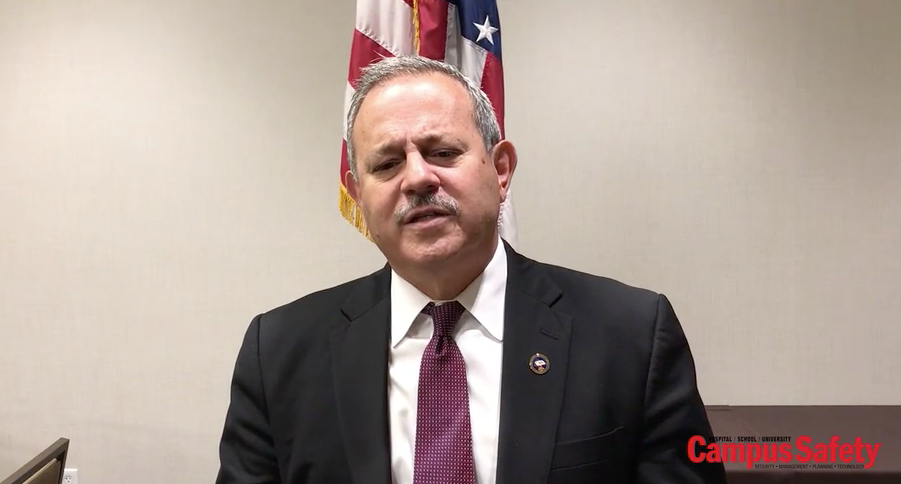There are 79 Fusion Centers spread out across the country that campus emergency management and security officials can leverage to improve their operations.
The centers are funded by the federal government to serve as a beacon for collaboration and guidance in every state, but security officials need to play an active role in their functioning in order to get the most out of them. When operating properly, the centers can serve as the focal point for the receipt, analysis, gathering and sharing of threat-related information.
Campus Safety spoke with Mark Ghilarducci, the director of the California Governor’s Office of Emergency Services, about the centers after he keynoted Campus Safety Conference West on August 1.
In the interview, shown in part in the video above, Ghilarducci explains the inner workings of Fusion Centers in his state.
“[Officials working in the Fusion Centers] are collecting information and looking at threat streams and other kinds of potential criminal activity throughout the state on a regional basis,” Ghilarducci explained. “All that information gets funneled and ultimately comes up to the primary center in Sacramento. They’re building information bulletins and other types of intelligent bulletins that get pushed out to law enforcement and other public safety entities… and stakeholders, including utilities and schools.”
Ghilarducci also talked about the benefits the centers in his state can provide for schools looking to identify vulnerabilities.
“If you want to do a threat assessment or vulnerability assessment, our Fusion Centers can go out and do a physical security risk and vulnerability assessment and give you a report that will help you focus your funding to make your campus and procedures as resilient and protected as possible.”
More Information on Fusion Centers
In the wake of the 9/11 terrorist attacks, the George W. Bush administration provided funding for the creation of the centers to support the following efforts of state, local and tribal entities:
- Share classified and unclassified information to address domestic security and criminal investigations with other states, localities, regions and the federal government
- Foster a culture that recognizes the importance of fusing all things with national security implications and all hazards information (e.g. criminal investigations, terrorism, public health and safety, and emergency response)
- Support critical counterterrorism, homeland security and homeland defense-related activities including developing and maintaining of topical risk assessment programs; federal threat assessment programs; alerts, advisories, and bulletins regarding time sensitive or strategic threats; situational awareness reports; analytical reporting regarding geographically relevant incidents or specific threats
- Develop critical infrastructure protection plans (in coordination with the National Infrastructure Protection Plan and other federal efforts)
- Prioritize emergency management, response, and recovery planning activities based on likely scenarios and at-risk targets
- Provide assessments of risk that support State and urban area homeland security preparedness planning efforts to allocate funding, capabilities, and other resources
- Provide risk-related information to support efforts to develop training, awareness, and exercise programs to ensure that State, local, and tribal officials are prepared to deal with terrorist strategies, tactics, capabilities, and intentions and to test plans for preventing, preparing for, mitigating the effects of, and responding to events
- Ensure that all locally generated terrorism-related information, including suspicious activity and incident reports, is communicated to the federal government and other states, localities, and regions
Ghilarducci says the focus of the Fusion Centers has expanded since they were first formed in the wake of 9/11 and also talked about the value of social media in their operations.
“[The program] started around the concern for counterterrorism issues but has evolved [to address] all crimes and has been very helpful for the sake of, say, an active shooter situation,” Ghilarducci said. “[It’s helped] being able to identify a potential active shooter situation by assessing social media platforms and being able to off-ramp that person by making an arrest prior to the action taking place.”
For a list of Fusion Centers by state and contact information, click here.













